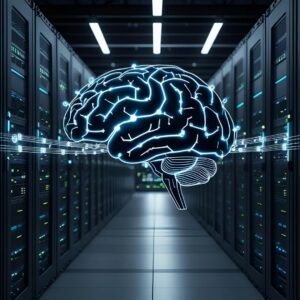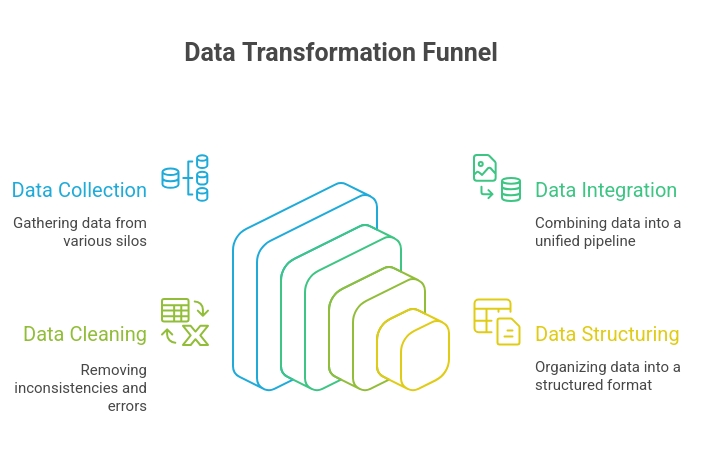Learn practical ways to integrate AI into legacy systems, improve efficiency, and drive smarter decisions without rebuilding from scratch. Our AI Development team is always here to help you.
How to Integrate AI into Legacy Systems
Every company has that one system, old, reliable, yet frustratingly outdated. It still runs payroll, manages transactions, or keeps customer records safe, but it  was built long before data-driven strategies became the backbone of business. Replacing such systems is costly and risky, yet ignoring them is even riskier. This is where modern intelligence can step in.
was built long before data-driven strategies became the backbone of business. Replacing such systems is costly and risky, yet ignoring them is even riskier. This is where modern intelligence can step in.
The question most executives face today is not if they should bring intelligence into these systems, but how. Integrating new capabilities into legacy software doesn’t need to be an all-or-nothing gamble. With the right approach, businesses can enhance efficiency, uncover hidden insights, and prepare for the future, while keeping existing systems intact.
In this blog, we’ll break down how to integrate AI into legacy systems in a straightforward way. You’ll find practical methods, key challenges, and strategies that leading enterprises use to modernize without tearing everything apart.
What Are Legacy Systems and Why Do Businesses Still Depend on Them?
Legacy systems are older applications or hardware still in operation long after their prime. Banks, insurance firms, healthcare providers, and manufacturers rely on them daily. These systems are often mission-critical, storing decades of valuable data and supporting processes that keep the business running.
However, their age comes with limitations:
- Falling behind technologically as new solutions emerge.
- Constant maintenance drains time and resources.
- Security gaps opening doors to breaches.
- Reduced agility in responding to market shifts.
Yet companies continue using them because ripping everything apart and starting fresh is expensive and disruptive. Modernization, therefore, is less about replacement and more about finding ways to extend the life and value of what already exists.
Why Add Intelligence to Legacy Systems?
Bringing intelligence into legacy applications is no longer a luxury; it’s becoming a survival tactic. Here’s why organizations are taking the leap:
 Operational efficiency – Routine processes can be automated, reducing errors and freeing staff to focus on higher-value work.
Operational efficiency – Routine processes can be automated, reducing errors and freeing staff to focus on higher-value work.
- Data insights – Legacy systems hold massive amounts of untapped data. Intelligent analysis can turn that into actionable insights.
- Improved customer experience – Predictive models and personalization elevate how businesses interact with customers.
- Future-proof infrastructure – Instead of waiting for systems to fail, businesses gain adaptability to market changes.
Still, this move is not without hurdles. Older systems were not designed with today’s tools in mind, which makes integration a delicate but worthwhile effort.
How Businesses Can Bring Intelligence into Legacy IT
The journey is best tackled in stages. Here’s how organizations can approach it without unnecessary risks.
1. Evaluate Current Systems and Define Use Cases
Before introducing new capabilities, study the existing setup. Understand system limitations, dependencies, and where improvements will bring the highest return.
Popular use cases include:
- Predictive maintenance to cut downtime.
- Fraud detection by spotting irregularities in transactions.
- Automated customer support through virtual assistants or chat interfaces.
The focus should always align with business goals and measurable ROI.
2. Prepare and Organize Data
Data is the lifeblood of intelligent models. Unfortunately, information trapped inside legacy systems is often messy, duplicated, or in incompatible formats. To make it usable:
- Clean and standardize – Correct errors, remove duplicates, and unify formats.
- Integrate – Connect siloed databases using middleware or integration tools.
- Label and categorize – Essential for supervised learning models, ensuring the system learns correctly.
If existing data quality is poor, businesses can build a data lake or warehouse to centralize and refine it for long-term use.

3. Pick the Right Integration Approach
There isn’t a one-size-fits-all answer. Companies typically choose one of the following methods:
- APIs and microservices – Add new modules without rewriting the entire system.
- Middleware solutions – Act as a translator between the old and the new.
- RPA with intelligence – Useful when legacy systems can’t connect directly. Automation mimics user actions while adding smart decision-making.
The right choice depends on how flexible the system is and the complexity of the new functionality.
4. Choose Tools and Platforms Wisely
When selecting platforms, consider compatibility, scalability, and business goals. Options include:
- Cloud-based services such as Microsoft Azure, Google Cloud, or IBM Watson for fast deployment.
- Pre-trained models for quick adoption in areas like text analysis or fraud detection.
- Custom models for niche industry-specific requirements.
Choosing the wrong platform can create bottlenecks later, so this stage deserves careful evaluation.
5. Build Security and Compliance Into the Plan
Legacy applications often lack modern defenses. When introducing advanced capabilities, new risks can arise. Safeguards to consider:
- Role-based access control and strong authentication.
- Encryption for data in transit and at rest.
- Continuous compliance monitoring to meet standards like GDPR or HIPAA.
By prioritizing these measures early, companies avoid costly vulnerabilities down the line.
6. Deploy, Test, and Monitor
Integration doesn’t end at launch. Continuous monitoring ensures the system delivers as expected. Key areas to track:
- Accuracy – Are outputs consistent and trustworthy?
- Performance – Is the system responding quickly without slowing legacy processes?
- Feedback – What do employees think of the changes?
Regular retraining of models is vital, especially as new data comes in.
The Major Obstacles Businesses Face
Compatibility Issues
Older systems weren’t built to handle today’s workloads. APIs and middleware often become the lifeline here.
Solution: Use wrappers, middleware bridges, and gradually modernize piece by piece.
Data Quality and Accessibility
Poorly structured data makes it difficult for models to function correctly.
Solution: Employ ETL pipelines, cleansing tools, and centralized storage.
Performance Bottlenecks
AI workloads are resource-intensive, and legacy systems aren’t designed for heavy computation.
Solution: Offload tasks to cloud or edge servers, optimize existing code, and containerize workloads.
Security and Compliance Risks
Older applications expose vulnerabilities once new components are introduced.
Solution: Embrace zero-trust principles, encrypt data, and enforce multifactor authentication.
Resistance to Change
Even if technology works, people may push back.
Solution: Start small, showcase measurable wins, and provide training sessions.
Smart Strategies for Success
- Hire experts with legacy knowledge – A developer who understands COBOL and modern APIs is invaluable.
- Add intelligence as an enhancement, not a replacement – Use it to strengthen existing processes instead of rewriting entire applications.
- Adopt cloud and hybrid approaches – Handle heavy workloads offsite while keeping sensitive tasks on-premises.
- Break monolithic systems into microservices – Easier to manage and integrate step by step.
- Automate data pipelines – Ensure the flow of reliable, structured data without manual intervention.
The Payoff: Key Benefits of Integration
-
- Higher efficiency – Tools like Apache Kafka and MuleSoft automate repetitive tasks.

- Scalability – Cloud-based platforms let businesses adjust to demand quickly.
- Better decision-making – Real-time analytics unlock patterns that were previously invisible.
- Continuous monitoring and governance – Solutions like Datadog and Apache Atlas ensure performance and compliance.
- Agility and readiness – Businesses stay flexible and prepared for whatever the market brings next.
- Higher efficiency – Tools like Apache Kafka and MuleSoft automate repetitive tasks.
[If needed, Our team is available 24/7 for additional assistance.]
Conclusion
For many organizations, the thought of replacing legacy systems is daunting. Yet, discarding them isn’t the only option. The smarter route is to enhance what already works with modern intelligence. By following structured steps, evaluating infrastructure, preparing data, selecting the right integration method, securing the system, and monitoring results, companies can get the best of both worlds.
The key lies in a gradual, well-planned approach. Instead of waiting for systems to become liabilities, businesses that act now gain a decisive edge in efficiency, insights, and competitiveness.







0 Comments